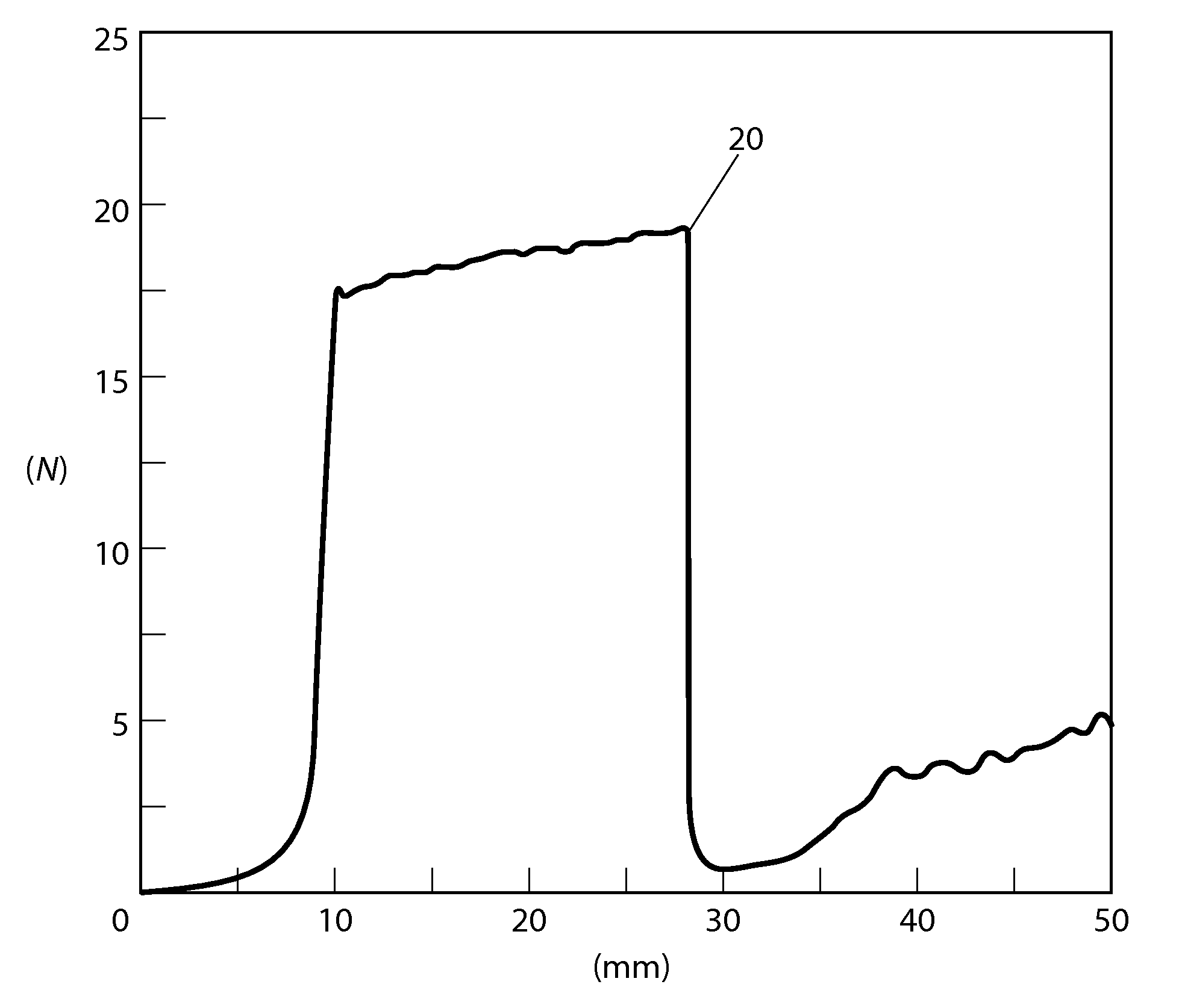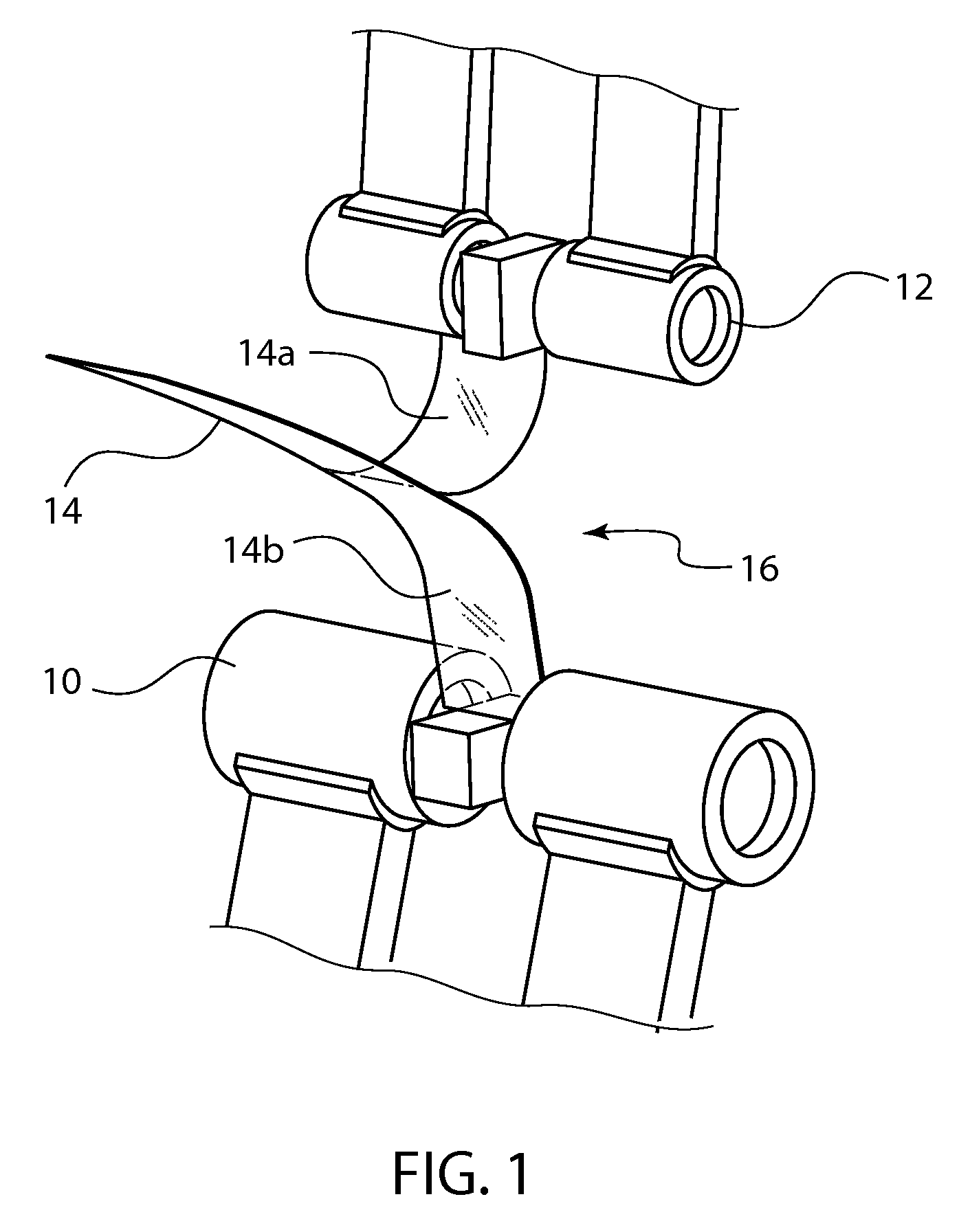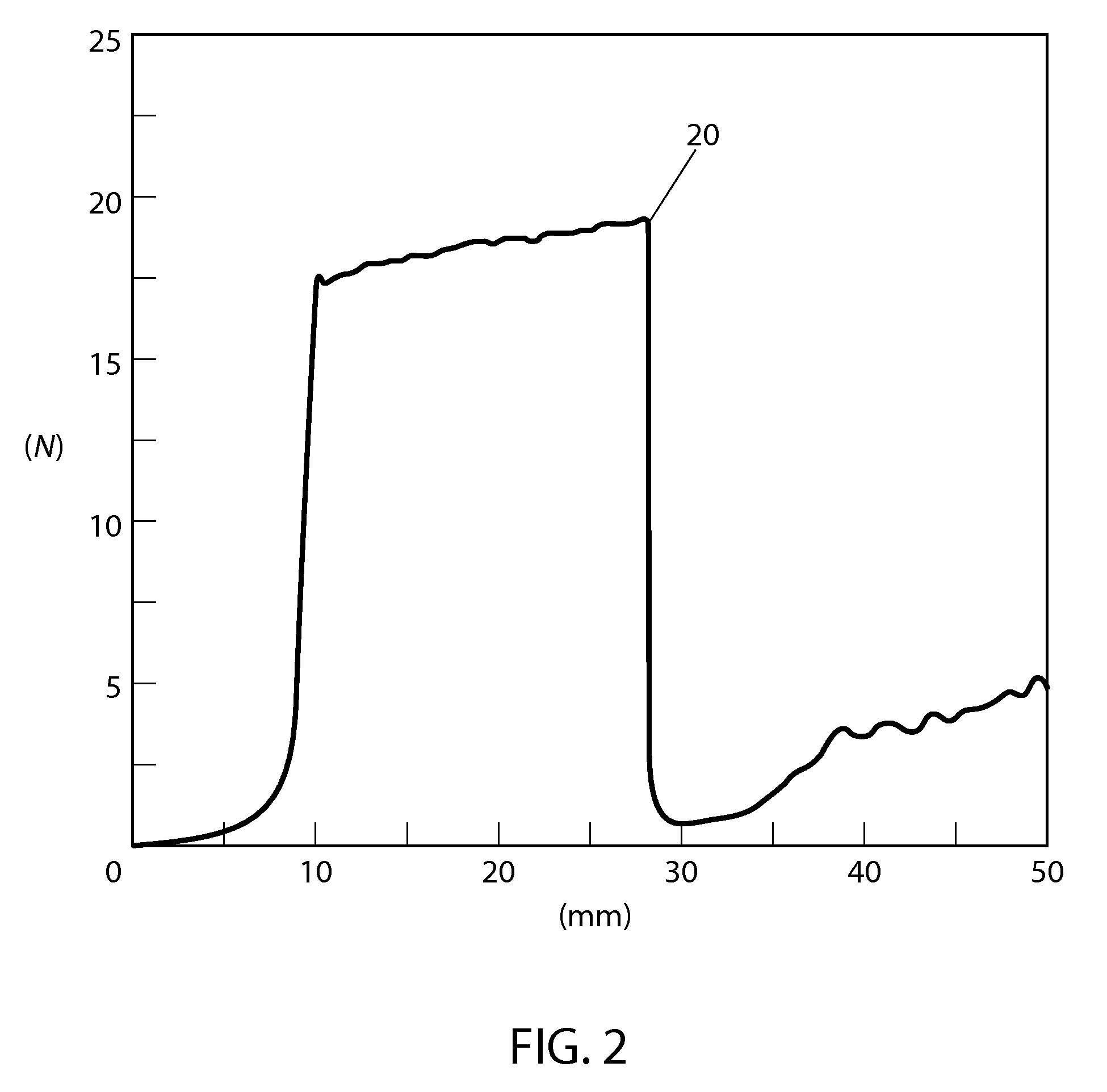Glyoxal adhesive system and process for manufacturing same
a technology of glyoxal and adhesive system, which is applied in the field of polarized optical article, can solve the problems of not meeting the adhesion requirements, the suggestion to use it as an adhesive, and the test using these proposed adhesives failing to achieve the adhesion minimum requirements, etc., and achieves the effect of improving wet adhesion
- Summary
- Abstract
- Description
- Claims
- Application Information
AI Technical Summary
Benefits of technology
Problems solved by technology
Method used
Image
Examples
example 1
[0052]In this example, glyoxal itself, is used as the adhesive for a TAC-PVA film. A commercial glyoxal water solution (40% wt / Sigma-Aldrich #128465) was combined with a few drops of 1.0 N HCl to obtain a solution with a pH<5 for use as an adhesive solution for the TAC and PVA film. The TAC film (FT80SZ) was made by Fuji Corp and was subject to a caustic treatment before lamination. The caustic treatment condition was 10% NaOH for 4 min at 60° C. The PVA polar film was made by Onbitt from Kuraray 2400 grade clear PVA. The TAC and PVA film were laminated by a roller lamination device with the formulated glyoxal adhesive, then subjected to a temperature of 90° C. for 0.5 to 3 hrs. The obtained polar TAC-PVA-TAC film ensemble exhibited good polarization, color and cosmetics as compared with a commercial polar TAC-PVA-TAC film ensemble made by Onbitt with a PVOH based adhesive. However, it exhibited much better adhesion than the commercial polar film ensembles made with the PVOH based a...
examples 2-5
[0055]These examples were performed in the same manner as described in Example 1 except that the glyoxal was formulated with a small amount of PVOH water based adhesive. The film lamination and cure cycle were the same as in Example 1. The obtained polar TAC-PVA-TAC film ensemble properties were as good as those found in Example 1. The wet adhesion results are shown in Table 2.
[0056]
TABLE 2Polar PVA / Wet Peel ForceTAC film TypeAdhesivemeasured by InstronExample 236 wt % glyoxal / 8-10N1 wt % PVOHExample 310 wt % glyoxal / 16N3.4 wt % PVOHExample 45 wt % glyoxal / 8-10N3.4 wt % PVOHCommercial PolarPVOH based ~1NFilm from Onbittadhesive
examples 5-6
[0057]The obtained polar TAC / PVA / TAC film ensembles made in Examples 3 and 4 were caustic washed and coated with latex-HMA as an adhesive layer to be laminated onto a 1.74 SF lens (0.75 base) that had been pre-washed and coated with latex. In this example the adhesive used was the tri-layer adhesive system as described in PCT Publication No. WO 2011 / 053329, the contents of which are incorporated herein by reference thereto.
[0058]The film lamination onto the 1.74 lens was done at a membrane pressure of 20 psi at a temperature of 90° C. for 3 minutes, followed by post-annealing at 100° C. for 6 hr. This lamination process has been previously described in PCT Publication No. WO / 2012 / 078152, the contents of which are incorporated herein by reference thereto.
[0059]After lamination, the lens was surfaced to a minus power of −12.0 D then hard-coated. In lieu of, or in addition to the hard coating another coating could be used, for example a protective coating, anti-reflective coating, phot...
PUM
| Property | Measurement | Unit |
|---|---|---|
| temperature | aaaaa | aaaaa |
| width | aaaaa | aaaaa |
| temperature | aaaaa | aaaaa |
Abstract
Description
Claims
Application Information
 Login to View More
Login to View More - R&D
- Intellectual Property
- Life Sciences
- Materials
- Tech Scout
- Unparalleled Data Quality
- Higher Quality Content
- 60% Fewer Hallucinations
Browse by: Latest US Patents, China's latest patents, Technical Efficacy Thesaurus, Application Domain, Technology Topic, Popular Technical Reports.
© 2025 PatSnap. All rights reserved.Legal|Privacy policy|Modern Slavery Act Transparency Statement|Sitemap|About US| Contact US: help@patsnap.com



